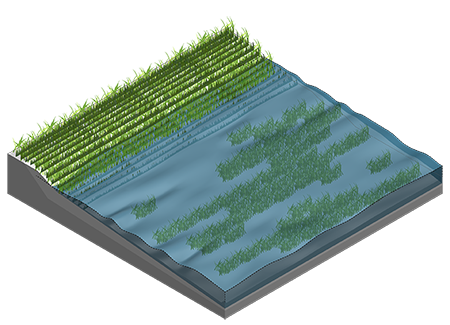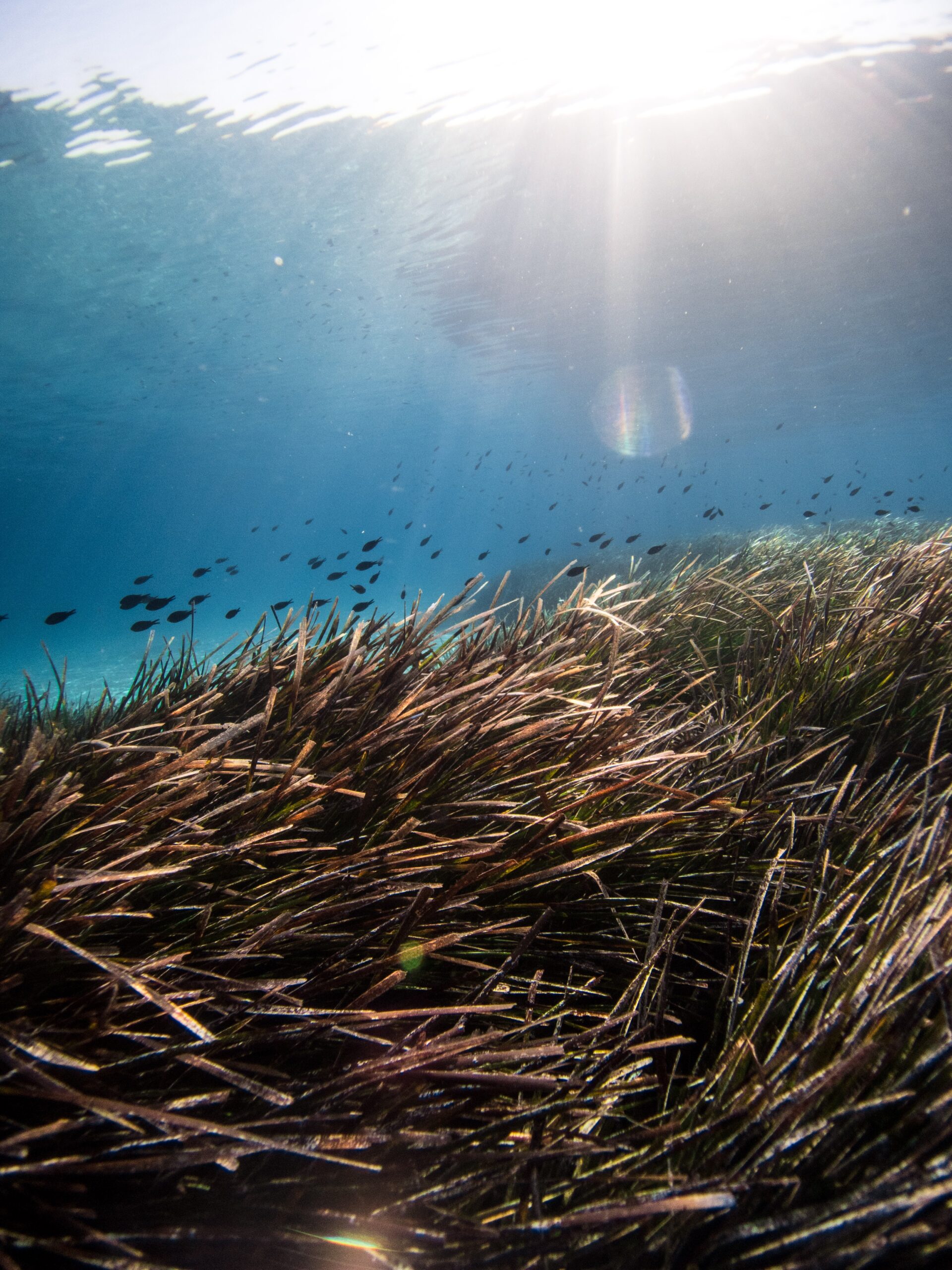Seagrasses
Seagrasses are a type of submerged aquatic vegetation that evolved over time to live in the marine environment. Like terrestrial plants, seagrasses have leaves and roots, and manufacture their own food via photosynthesis. As such seagrasses require sufficient light to survive and, therefore, tend to be found primarily in shallow, low energy environments, though some species can be found at much greater depths in the presence of clear water. They are also particularly sensitive to water temperature, with different species thriving at different temperature gradients along the coast. Wherever they are found, most seagrass species form large “beds” of interconnected root systems and rhyzomes which provide habitat for thousands of species.
In the United States seagrasses are found along the Atlantic, Gulf, and Pacific coasts, primarily in coastal lagoons, estuaries, or other protected waters. While there are approximately 60 species of seagrass worldwide most of the seagrass areas along the United States coast are defined by the presence of just a few species – eelgrass, turtle grass, and manatee grass.
Hazard Reduction
Under normal conditions, seagrass meadows are able to slow down water currents and reduce wave energy, reducing the impact of wave action on adjacent shorelines. Additionally, seagrass beds are capable of stabilizing the sea floor with their extensive root systems, keeping sediments from moving and trapping suspended sediment to maintain the integrity of the local shoreline.
The effectiveness of seagrasses is substantially reduced in major storm events as the relative reductions in wave energy and stabilization can be overwhelmed by larger and more violent storm driven wave action. That said, as with other offshore and coastal habitats, seagrasses provide the most effective protection when working in concert with mangroves, coral reefs, oyster reefs, or coastal marshes.

Threats
Water clarity, water quality, and water temperature are the primary determinants of seagrass health. While other threats – such as physical impacts from fishing and boating or the outbreak of disease – can cause significant damage, recent studies have found that the predominant threats to seagrasses comes from land based pollution (run-off, nutrients, sedimentation) and increasing water temperatures.
Whereas other stressors may impact seagrass and weaken or degrade the overall health of the habitat, excessive nitrogen pollution has come to be known as the killer threat to seagrasses. Increased nitrogen in the water column may lead to other species outcompeting seagrasses while also encouraging the growth of algal blooms which can limit the amount of light that reaches seagrass leaves. Some studies are finding that increased nitrogen is resulting in less root development in seagrasses, leading to weaker seagrass beds that are then more susceptible to impacts from direct damage, such as storm events or boat strikes. Conversely, some of the greatest seagrass restoration successes have come from limiting or eliminating nitrogen pollution in coastal waters and provide hope that, once nutrient pollution is addressed, large scale restoration is possible.
Co-Benefits
Seagrass beds, like coral reefs, are amongst the most productive habitats in the marine environment. Seagrasses provide food, shelter, and essential nursery areas to thousands of marine and estuarine species. Many endangered and rare species, such as the Florida manatee use seagrass beds as one of their primary sources of food.
An extension of the important role they play in providing habitat, seagrass beds help support many of the commercially and recreationally important fishery species along the coast. Some estimates suggest that over 70% of Florida’s economically important fishery species rely on seagrass beds for some stage of their lives. Bay scallops spend nearly their entire lives in seagrass beds and are among the most valuable shellfish per pound on a commercial basis.
While seagrasses rely on clean and clear water to survive and thrive, they can also play a role in improving water quality and clarity. Seagrasses help trap fine sediments and particles that are suspended in the water column, which increases water clarity. Seagrasses are also able to filter, to a degree, nutrients that come from land-based pollution and stormwater runoff before these nutrients are washed out to sea and to other sensitive habitats such as coral reefs. However, these natural filtering abilities can be overwhelmed and should not be assumed to be limitless.
Additional Resources
Seagrass Net is a global seagrass monitoring and information network, with collaborators providing updates on seagrass health and growing the scientific understanding of the resource from 33 countries around the world.
The State of Florida has developed a seagrass conservation and monitoring program that offers a number of resources and access to research and seagrass information.
The Seagrass Conservation Working Group is an effort out of British Columbia focused on conservation and restoration and provides tools for communities and individuals who want to take an active role in protecting local seagrass populations.

